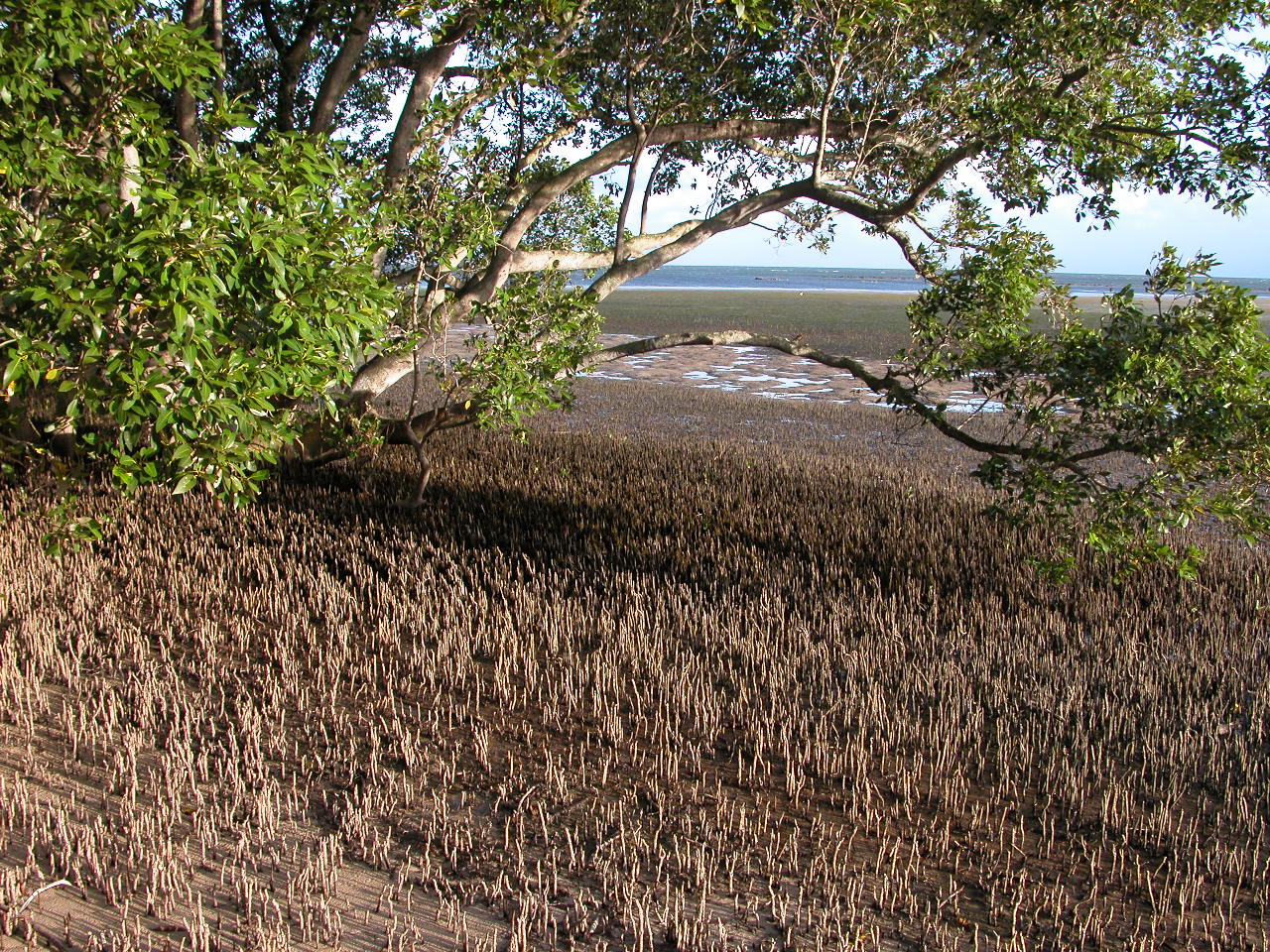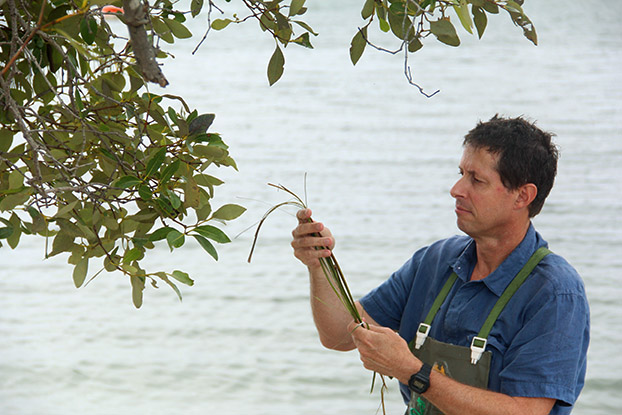The thin green strip of mangrove wetlands around the tropical coastlines of Australia and the world are the most carbon-rich forests on earth but they are at risk.
Professor Rod Connolly, a marine scientist from Griffith University’s Australian Rivers Institute, is the co-author of new research that shows the vast reserves of carbon being sequestered by mangrove forests.
“This is the first comprehensive assessment of mangrove carbon stocks, country by country around the coastlines of the world”, Professor Connolly said.
Mangroves and other coastal plants use atmospheric carbon to grow. Some carbon is locked up in their trunks, branches and roots. But even more is isolated in the forest soils.
The deep muddy soils that mangroves live in provide ideal conditions for preventing decomposition of carbon and thus keeping it locked up for millennia.
A new paper, Global patterns in mangrove soil carbon stocks and lossespublished in the journal Nature Climate Change,identifies areas of the world most vulnerable to losing this huge carbon store back to the atmosphere.
According to the research, losing the world’s mangroves could release an extra seven million metric tonnes of carbon dioxide into the atmosphere per year.
The researchers looked at patterns of carbon storage in mangrove soils around the world and found Australia’s soils have some of the highest carbon storage.
The findings mayhelp countries consider the emissions impacts of mangrove deforestation.
At risk
Professor Connolly said the paper shows clearly where most urgent attention to mangrove conservation is required.
“We need to do all we can to prevent major losses in Australia, such as the massive die-off in northern Australia and the Gulf country in 2016,” Professor Connolly warned.
Hundreds of kilometres of mangroves along the coast of Karumba in Queensland’s Gulf Country and in the Northern Territory have turned a ghostly whiteaffecting fish stocks, flora and carbon storage in the region.
Australia is home to 7 percent of the world’s mangroves.

